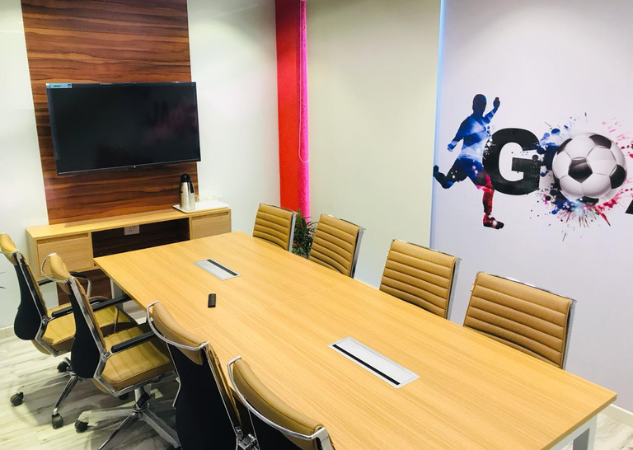In today’s fast-changing business world, preparing for the future is essential. Succession planning helps companies stay strong by training top talent to step into leadership roles. This blog shows how to turn your best employees into future-ready leaders.
💡 Are you looking for Coworking space in Gurgaon, Noida or Delhi? We are just a call away. Call Now: 08999 828282
10 Ways to Turn Your Best Employees Into Future-Ready Leaders
- Understand the Importance of Succession Planning
- Identify High-Potential Employees Early
- Create a Structured Leadership Development Plan
- Encourage Cross-Training and Job Rotation
- Promote a Culture of Mentorship
- Support Career Progression With Clear Paths
- Use Real-Life Leadership Challenges
- Communicate Succession Planning Goals Company-Wide
- Reward and Recognize Development Milestones
- Monitor, Review, and Adjust Succession Plans Regularly
1. Understand the Importance of Succession Planning
Succession planning is the process of preparing employees to fill key roles when leaders leave or retire. Without it, companies face leadership gaps that can hurt productivity and morale.
Start by identifying critical positions in your business. Ask: “If this person left tomorrow, what would happen?” Then, spot high-potential employees who can be trained to take over. This isn’t only for senior roles — mid-level positions also need backup plans.
Good succession planning ensures smooth transitions, better team confidence, and long-term stability. It also helps with talent retention as employees feel valued and see a future with the company. This proactive approach gives your business a competitive edge and keeps operations strong, even during leadership changes.

2. Identify High-Potential Employees Early
The sooner you find your rising stars, the better. Watch for employees who show leadership potential — those who take initiative, solve problems, and earn the respect of their peers.
Use a mix of performance reviews, manager feedback, and 360-degree evaluations. Look beyond job titles and observe behaviors that signal leadership qualities — like accountability, adaptability, and strong communication.
Once identified, speak with these employees about their career progression goals. Let them know you see their potential and want to support their employee growth. This boosts motivation and creates a loyal talent pipeline for your future leadership needs.
3. Create a Structured Leadership Development Plan
After identifying top talent, the next step is a strong leadership development plan. This should include formal training, mentoring, cross-functional projects, and shadowing senior leaders.
Developing future leaders is not a one-size-fits-all process. Each person has unique strengths and weaknesses. Customize their development journey to build the right skills and mindset for leadership.
Offer courses on strategic thinking, team management, and emotional intelligence. Assign mentors to guide them and provide regular feedback. A structured approach speeds up employee growth and ensures your future successors are truly ready when the time comes.
Also Read: 10 Strategies for Leaders to Future-Proof Their Workforce
4. Encourage Cross-Training and Job Rotation
One of the best ways to prepare employees for leadership is by exposing them to different areas of the business. Cross-training and job rotation allow them to understand how different teams function and how decisions affect the entire organization.
This hands-on learning builds versatility and business-wide thinking — key traits for leadership. It also identifies new skills and uncovers hidden talents.
Cross-functional exposure also strengthens your business succession plans by ensuring successors are well-rounded and confident in multiple roles. Plus, it’s a great way to boost engagement and show your commitment to employee growth.
5. Promote a Culture of Mentorship
Mentorship plays a major role in leadership development. Experienced leaders can pass down knowledge, build confidence in rising stars, and help them avoid common mistakes.
Encourage senior leaders to mentor younger employees. Set up formal mentorship programs that align with your succession planning goals. Regular check-ins, coaching sessions, and shared learning experiences deepen leadership skills and build trust.
When done right, mentorship boosts talent retention by showing employees they’re not alone in their growth journey. It also strengthens the leadership bench by ensuring knowledge is shared, not hoarded.
6. Support Career Progression With Clear Paths
Employees are more motivated to stay and grow when they can see a clear path forward. Outline possible leadership tracks for different departments and roles.
Be transparent about what it takes to advance — the skills, mindset, and experience required. Offer guidance, resources, and regular career conversations.
This clarity around career progression supports employee growth and helps retain top performers. When people know there’s a future for them in the company, they’re more likely to stay committed and contribute at higher levels.
7. Use Real-Life Leadership Challenges
The best way to test leadership readiness is by putting employees in real situations where they must think and act like leaders. Assign special projects or let them lead teams during busy times or transitional periods.
These experiences develop decision-making, conflict resolution, and strategic thinking. It’s also a great way to spot gaps that formal training might miss.
Such practical exposure supports leadership development and gives employees confidence in handling leadership roles. It helps you assess whether they’re ready to be part of your business succession plan.
8. Communicate Succession Planning Goals Company-Wide
Don’t keep succession planning a secret. Open communication about leadership development goals builds transparency and trust within your company.
Let employees know you invest in developing future leaders, and that growth opportunities are available. Encourage them to take charge of their own learning and raise their hands for new roles.
This clear communication boosts talent retention and keeps everyone aligned with the company’s long-term goals. It also encourages a more engaged and ambitious workforce.
💡 Are you looking for Coworking space in Gurgaon, Noida or Delhi? We are just a call away. Call Now: 08999 828282
9. Reward and Recognize Development Milestones
Recognize and celebrate progress. Whether it’s completing a leadership course or successfully managing a cross-functional project, acknowledge growth.
This recognition encourages continued effort and shows your company values employee growth. It also signals to others that leadership development is rewarded, motivating more employees to step up.
By integrating these recognition moments into your company culture, you build a high-performance team that sees growth and recognition as a norm, not an exception.
10. Monitor, Review, and Adjust Succession Plans Regularly
Succession planning is not a one-time event. Businesses change, people move, and new roles emerge. Regularly review your succession planning efforts to ensure they still align with your company’s needs.
Track employee progress, gather feedback from mentors and managers, and make changes where necessary. Also, update development plans as roles evolve or new business goals arise.
An adaptable plan ensures your business succession strategy stays strong and relevant. It helps you remain prepared for unexpected changes and keeps your leadership pipeline healthy.
Turning your key employees into business successors is one of the smartest investments you can make. With proper succession planning, ongoing leadership development, and clear career progression paths, you create a resilient organization that thrives during change.
If you’re a business looking for flexible, professional coworking spaces in prime locations, The Office Pass (TOP) is your go-to partner. With a strong presence across NCR and a focus on convenience, community, and cost-efficiency, TOP offers an ideal workspace solution for teams of all sizes.
Get in touch with The Office Pass today at 89998 28282 to explore office spaces that work just as hard as you do.
FREQUENTLY ASKED QUESTIONS (FAQS):
Question: What is succession planning, and why is it important?
Answer: Succession planning is preparing employees to take over important roles when needed. It prevents leadership gaps, ensures business continuity, and keeps your team strong even during transitions.
Question: How do I identify high-potential future leaders?
Answer: Look for employees who take initiative, solve problems, and earn respect. Use performance reviews, manager feedback, and behavior patterns to spot those with leadership qualities.
Question: What are the benefits of leadership development programs?
Answer: They improve decision-making, team management, and strategic thinking. Such programs also help with employee growth and prepare staff to take on leadership roles.
Question: How can cross-training help in succession planning?
Answer: Cross-training builds versatile employees who understand different departments. It develops broader thinking and prepares staff to handle leadership roles confidently.
Question: What’s the difference between career progression and succession planning?
Answer: Career progression is an individual’s growth in their role. Succession planning is a business strategy to prepare employees for critical roles to ensure continuity.
Question: How does mentoring support leadership development?
Answer: Mentoring provides guidance, knowledge transfer, and emotional support. It helps future leaders learn from experience and avoid common mistakes.
Question: Can small businesses benefit from succession planning?
Answer: Yes, especially since losing a key person in a small team has a big impact. Succession planning ensures continuity and prepares others to step in when needed.
Question: How do I retain top talent through leadership development?
Answer: Offer growth opportunities, mentoring, and recognition. When employees see a clear path and feel valued, they’re more likely to stay.
Question: How often should I update my succession plan?
Answer: At least once a year or whenever major business or team changes happen. Regular updates keep your plan relevant and effective.
Question: What if my identified successor leaves the company?
Answer: Always have backup options and keep developing a pool of talent. A strong business succession plan prepares multiple employees to step in as needed.



